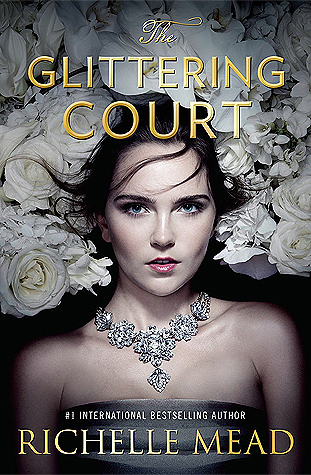
When this book first came out, I assumed it had something to do with faeries. Nope, no faeries in here. Instead, THE GLITTERING COURT is a bizarre reimagining of mail-order brides being sent to America from England, only they're not called America and England; they're called Adoria and Osfro.
The main character, "Adelaide," is a countess from an impoverished family in Osfro who is being trotted out to various other noble families to marry one of their sons. Adelaide decides "screw this!", pays off her maid, and goes to a special finishing school in Adoria called The Glittering Court... to be trotted out to various other professional-class families to marry one of their sons. ...wait, what?
Questionable logic aside, I really liked the part of the book set in The Glittering Court, even if it sounds like something a sixteen-year-old girl came up with. I'm a sucker for makeover montages, and the entire first half of the book is basically a nonstop makeover montage. Adelaide also makes two friends named Tamsin and Mira, and they help each other through the trickier parts.
Is this book sexist? Well, it's certainly no HUNGER GAMES, I'll tell you that much. It's about girls learning to change themselves to become acceptable wife material, and vaguely reminiscent of the brain-washing facilities in The Handmaid's Tale, where they train the handmaids for their new "roles", and vaguely reminiscent of beauty competitions, where all of the girls are competing for the top spot, knowing only one of them can be the exclusive "diamond" girl.
Is this book racist? Ehh. In Adoria, the Osfridian settlers took land away from these people called the "Icori" and forced them to live on settlements. It's not really discussed much until the Icori actually make an appearance in the story, and even then, that's brushed aside mostly in favor of "Oh noes! Icori attack! Run!" They're called "savages" a couple times and shoot arrows... but they're all white, with either blonde or red hair, and they wear tartans. So I'm guessing the author wanted to kind of explore racial issues without actually having the controversy of including people of color being oppressed, but I think that ends up being more controversial because it looks like appropriation and erasure. The Trail of Tears was a very dark time in U.S. history, and I don't really think a fluffy historical fantasy novel about getting married was the right vehicle to superficially explore this.
Also, the second half of the book is completely different from the first, set in an Old West kind of setting meant to mimic the gold rush of California in the mid-1840s. Adelaide spends her time panning for gold and living in a wooden shack, and then there's a freaking trial, and yeah, it's completely off the wall. I wasn't expecting anything like that, and it makes THE GLITTERING COURT feel like two half-realized book ideas got smooshed into one.
A lot of my friends really hated this book, and I can see why. But I read THE SELECTION first, and that book was much more offensive to me because it was not only worse written, but also more cavalier about serious issues like class. THE GLITTERING COURT comes off as a little insensitive, but at least it makes a serious attempt to look at poverty and doesn't go the "being poor means sometimes I have to go without my precious makeup!" route that THE SELECTION did.
I liked it...reluctantly. It's not as good as her Age of X series or Vampire Academy series, but it's a sight better than SOUNDLESS or Dark Swan. THE GLITTERING COURT might have been better if she'd gone THE RING AND THE CROWN route and made this a straight-up historical fantasy rather than just changing around the names and details of their very obviously real-life counterparts.
3 out of 5 stars
No comments:
Post a Comment
Note: Only a member of this blog may post a comment.